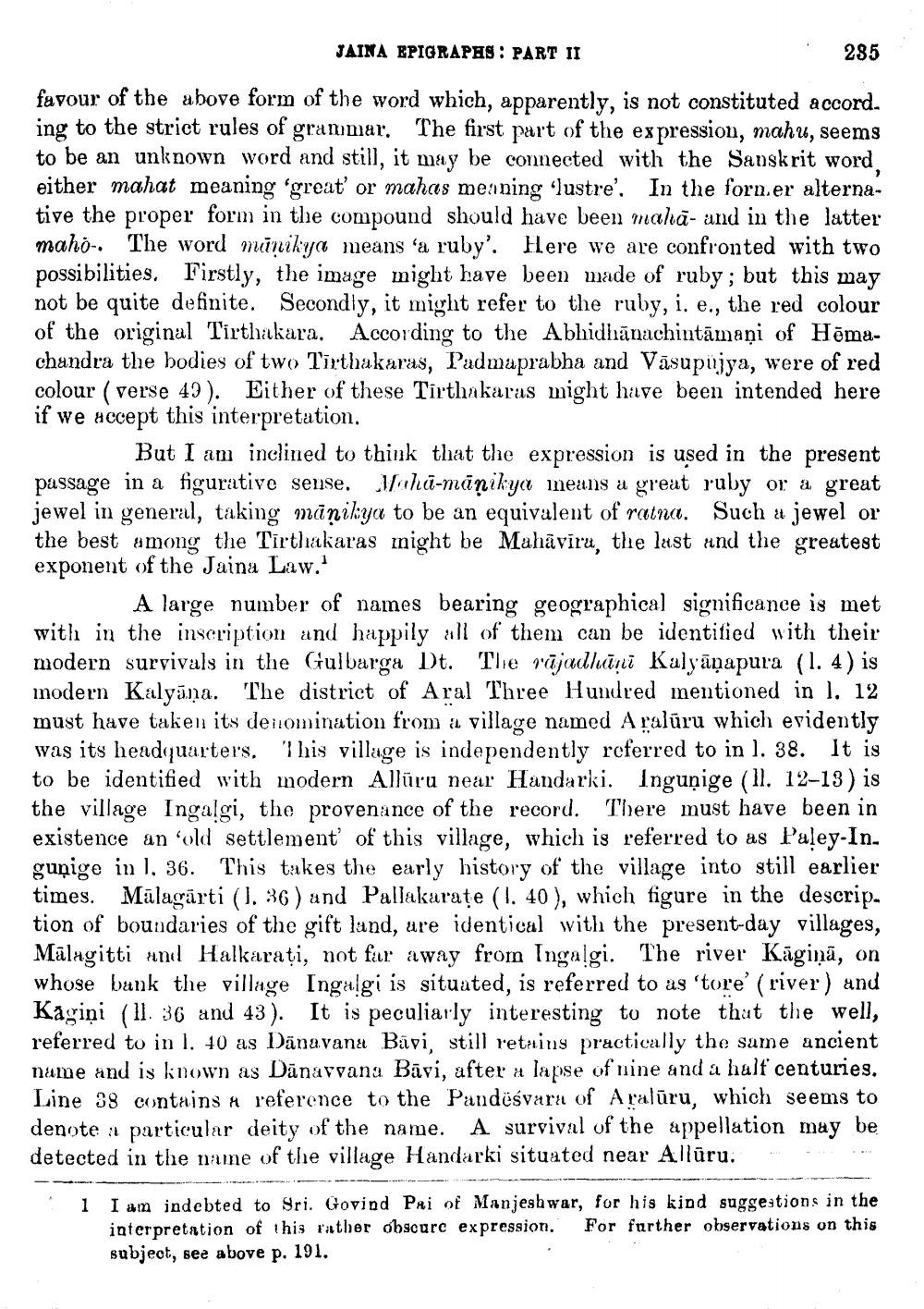________________
JAINA EPIGRAPHS: PART II
favour of the above form of the word which, apparently, is not constituted accord. ing to the strict rules of grammar. The first part of the expression, mahu, seems to be an unknown word and still, it may be connected with the Sanskrit word, either mahat meaning 'great' or mahas meaning 'lustre'. In the forn.er alternative the proper form in the compound should have been maha- and in the latter maho. The word manikya means 'a ruby'. Here we are confronted with two possibilities. Firstly, the image might have been made of ruby; but this may not be quite definite. Secondly, it might refer to the ruby, i. e., the red colour of the original Tirthakara. According to the Abhidhanachintamani of Hēmachandra the bodies of two Tirthakaras, Padmaprabha and Vasupujya, were of red colour (verse 49). Either of these Tirthakaras might have been intended here if we accept this interpretation.
235
But I am inclined to think that the expression is used in the present passage in a figurative sense. Mahā-māṇikya means a great ruby or a great jewel in general, taking manikya to be an equivalent of ratna. Such a jewel or the best among the Tirthakaras might be Mahavira, the last and the greatest exponent of the Jaina Law.1
A large number of names bearing geographical significance is met with in the inscription and happily all of them can be identified with their modern survivals in the Gulbarga Dt. The rajadhani Kalyanapura (1.4) is modern Kalyāna. The district of Aral Three Hundred mentioned in 1. 12 must have taken its denomination from a village named A raluru which evidently was its headquarters. This village is independently referred to in 1. 38. It is to be identified with modern Alluru near Handarki. Ingunige (l. 12-13) is the village Ingalgi, the provenance of the record. There must have been in existence an 'old settlement' of this village, which is referred to as Paley-In. gunige in 1. 36. This takes the early history of the village into still earlier times. Malagarti (1. 36) and Pallakarate (1. 40), which figure in the descrip. tion of boundaries of the gift land, are identical with the present-day villages, Malagitti and Halkarați, not far away from Ingalgi. The river Kāgiņā, on whose bank the village Ingalgi is situated, is referred to as 'tore' (river) and Kagini (1 36 and 43). It is peculiarly interesting to note that the well, referred to in l. 40 as Danavana Bavi, still retains practically the same ancient name and is known as Danavvana Bāvi, after a lapse of nine and a half centuries. Line 38 contains a reference to the Pandesvara of Araluru, which seems to
denote a particular deity of the name. A survival of the appellation may be detected in the name of the village Handarki situated near Allūru.
1
I am indebted to Sri. Govind Pai of Manjeshwar, for his kind suggestions in the interpretation of this rather obscure expression. For further observations on this subject, see above p. 191.




